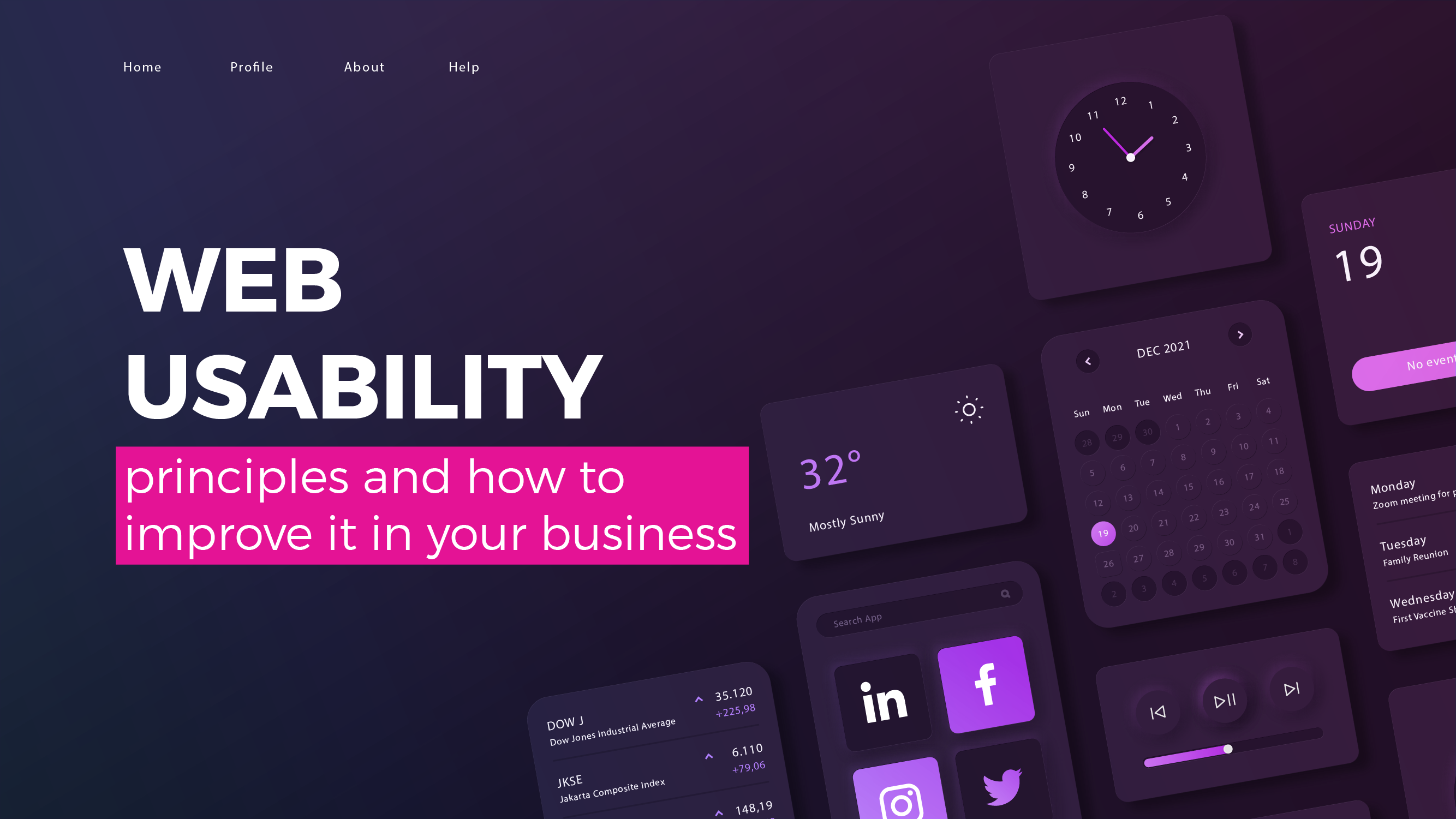Nowadays, selling a product or service means offering it to customers on a silver platter. The easier it is for them to understand the value you can offer them and how to get it, the better your chances of conversion will increase.
In the digital world we live in, a determining factor is how easy it is for the user to navigate your website, application or platform to get the information or resource they need. This is a factor called usability in the UX/UI world.
Let’s understand it better and learn how we can improve it to deliver a better digital experience for everyone.
What is web usability?
Web usability is about creating intuitive and efficient interfaces for users. When they come to your site, they should be able to navigate effortlessly, find relevant information and perform the actions they want. This involves different aspects, such as the layout of elements, clarity of language and loading speed.
A website with good usability is a site where users can interact in a simple, fast, intuitive, pleasant and safe way. The easier a website is to navigate, the more usable it is from a user experience perspective.
The difference between usability and usefulness is that usability describes the ease (or lack thereof) of interacting with a product, whereas usefulness relates to the ability of a product or service to satisfy a need or solve a problem. A product can be usable and not very useful, usable and quite useful, or neither usable nor useful to the person.
Importance of usability in a website
Web usability is a key concept in UX/UI design. Good usability promotes a positive experience, which can increase user retention and ultimately drive the success of your online business, as a website or application that is easier to use will have the upper hand over one that is confusing and offers many friction points.
An example of this is this Forrester report, which notes that a well-conceived, frictionless user experience has the potential to increase a business’ conversion rates by 400%.
Using more specific terms, poor usability on a website promotes a much higher abandonment or bounce rate, as people will have difficulty navigating and will prefer to opt for more accessible alternatives. On the other hand, a page or platform focused on usability can have a much higher retention rate.
How to improve the usability of a website
Improving the usability of a web page, application or platform involves many factors, from creating a simple interface without extra elements to being able to adapt the product to different access points (mobiles, computers, tablets…). We have made a summary of the most important things to take into account.
Ensure easy navigation
We are talking about generating a clear and structured navigation. This is essential, because when you organize your pages into logical categories and use drop-down menus or navigation bars to guide users, you help them navigate more easily through your website and find the content they are looking for.
Make sure the links you include are descriptive and placed in visible locations. If visitors can move quickly through your site, they will be more likely to explore and find something that will convert them into customers.
Clean and attractive design
Visual design also influences usability. Whenever possible, opt for a clean, minimalist design that doesn’t overwhelm users with too much information.
Use consistent colors, legible fonts and adequate white space. Don’t forget that images and graphics should be relevant to the content and of high quality.
Remember, an attractive design is not only attractive because it is aesthetically pleasing, but also because it is intuitive and easy to understand.
Make a responsive page
We are in the mobile era, and adaptability is crucial. Make sure your website is responsive, that is, that it looks good on different screen sizes across various devices (computers, mobiles, laptops).
Test the performance of the page in these spaces and make sure the experience is the same on each of them. A responsive design ensures that users can access your content without problems, regardless of the device they use.
Organize the information well
Content structure is vital, and we’re not the only ones to say so. For example, ColorWhistle data shows that 42% of users abandon a website if they encounter usability and functionality problems.
Divide your pages into clear sections and use concise headings and paragraphs. Also use lists and bullets to highlight important points.
In addition, include strategic calls to action (CTAs) to guide users to desired goals, such as purchasing specific products or services, downloading a file, filling out a form, or subscribing to a newsletter.
Anticipate potential problems
Anticipating errors is crucial in UX/UI design. Even if you give the user everything they need for a satisfying and intuitive experience, you need to anticipate situations where the user gets confused or performs an action by mistake.
Therefore, you must include options to return or cancel actions so that users can return to a previous situation and be able to do the action they wanted to do from the beginning.
Web usability is a determining factor in the success of your online business. When you take into account the best practices and focus your efforts on the user, you are one step closer to conquer your visitors and turn them into satisfied customers.
Designing and maintaining usable digital products is a top priority at Coderslab. We are not only dedicated to making visually appealing environments and platforms, but we also strive to make them easy and intuitive for people to navigate so they can find what they want. This is our philosophy and what we deliver on every project.
